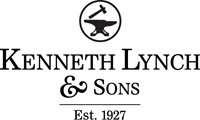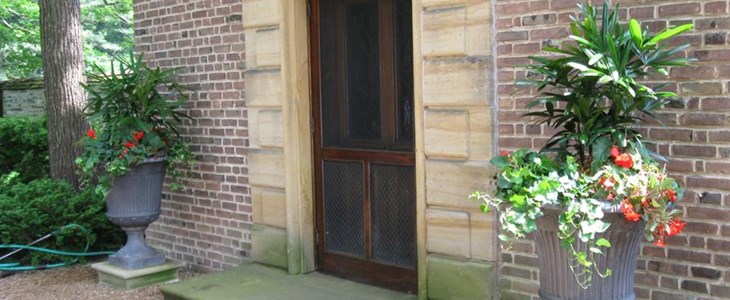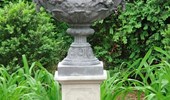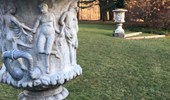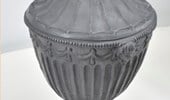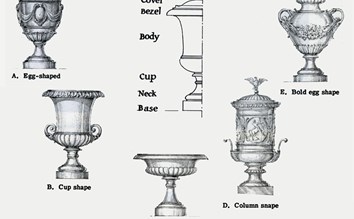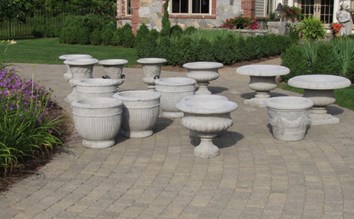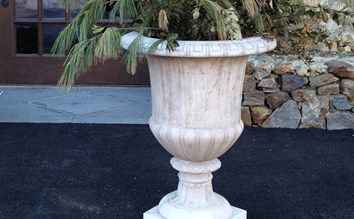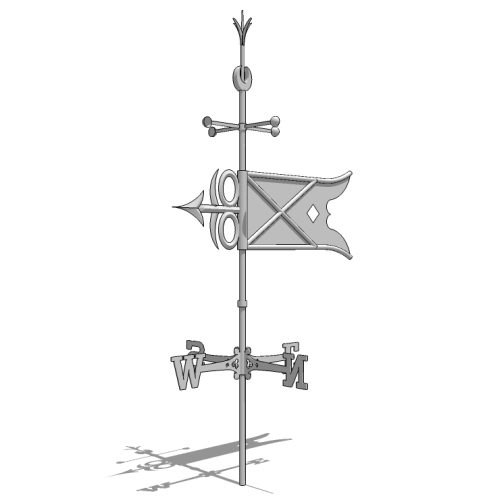Garden Urns - A Style Guide
USA
Project Details
- Architect
- Kenneth Lynch & Sons
- Location
- USA
- Project Year
- 2019
Ornamental urns have provided sculptural beauty and an artistic focal point to homes and gardens throughout history. A beautiful set of entry urns will elevate your home’s curb appeal and express your personal style, while welcoming your guests with flair (Above: No. 2959 Lead Urns on low pedestals).
Lynch Estate Elements offers countless styles and varieties of urns to suit every taste: open urns to display greenery, closed urns to provide sculptural interest to the garden, and even small urns for tabletop décor.
The following “Urnology”, as Kenneth Lynch coined it, is helpful when considering what shape is appropriate to best suit your garden design. The illustration above outlines the various classic urn shapes and the distinct parts of an urn. The best part is that urns of various shapes, profiles, and materials can coexist beautifully and provide visual interest throughout your garden.
The Durability of Cast Stone
With the durability of cast stone it is possible to have very large garden urns that will handle the pressures of soil and water weight. We have one model which is the largest we have ever seen. This piece is 57” tall with a large planting area that would hold a small tree root ball well. What is interesting about this piece is the incorporation of lead handles. While cast stone is an excellent material for planters, the shape and protruding nature of a handle is not well suited for cast stone. Many lesser companies will include a handle of cast stone and hope for a few years of it holding up. We choose to address the integrity of the handle from the start with a reliably durable material such as lead.
Many of our cast stone urns are based on original designs which were carved in natural Italian limestone. The details on naturally carved stone is reproduced in our hand laid latex molds. These molds pick up the carving details but also any stone features such as fossilized shells or crevasses. Our founder Kenneth Lynch had the vision and intention of making the beauty of such carved pieces more accessible to the garden ornament market. The bonus to the cast stone material is that it is well suited to the harsher climates that much of the United States endures in the winter months.
An Urn Style for Every Taste
Urns can be of a whimsical design as well. A popular example is our urn shaped like a giant clam shell which would blend well into a beach home, or for those who want a reminder of the sea. This piece includes the classic neck and base but has a shell as the cup. No matter the style, shape, or material, multiple urns can play off each other beautifully in the garden and can be situated in distinct garden “rooms” to set the tone for each garden experience.
Urns with covers can also be referred to as finials. Covered urns are especially majestic on tall entry columns where the urn finishes off the design. The proportion of the column width to the width of the finial should allow for at least a 2” to 3” reveal on all sides. It is quite acceptable to use a pedestal adapter to reduce the width of the column top to a more appropriate reveal. This method helps when something like a narrow pineapple is selected as the finial. The perfect combination is a tall finial with substantial width to balance a large column. These large size finial urns can be heavily adorned with fruits and swags or clean and simple with varying molding details to create the urn shape. A finial urn makes quite a personal statement in the garden, on the veranda, adorning a penthouse, or paired for an elegant entryway.
Lead Urns as a Focal Point
Lead is a unique material in that is cast in sections from molds and then welded together to make a cohesive whole. The urn designs in lead are generally smaller than those in cast stone, but often the detailing is very fine, reproducing intricate ornamentation. A most wonderful example of this detail is the urn with cherubs, sometimes referred to as hush babies. These little figures by themselves are full of detail and then layering in the details of swags, acanthus leaves and rosettes makes this piece truly unique.
Another favorite in the lead selection of urns is the Adams inspired urn with embellished handles. The Adams Style is defined by the Neoclassical influences of the 18 th century. Designs of this style featured more curved lines, framed rosettes, vine scrolls and mythological creatures. The classic Adams style urn with no additional embellishments is widely known in the design world. We are lucky to have a fine model of this to offer to our customers. What is unique in the way we fabricate our lead pieces is that some of our urns have removable covers. This allows a dual-purpose ornament for container plantings in the growing season and a covered urn in the winter.
Lynch Estate Elements offers hundreds of decorative urns that will surely elevate your home and garden to new heights.


